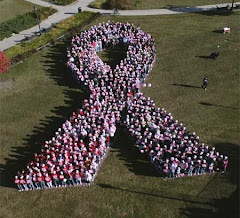When your best hopes and desires, are scattered to the windI haven't posted an update since Thanksgiving because shortly after my last post I was hit with another wrecking ball. It took me awhile to regain Bruce's No Surrender attitude after I learned in early December that I had had another recurrence of the slow growing monster that I've been battling for 12 years, Adenoid Cystic Carcinoma of the Breast (ACCB). On December 7th, Pearl Harbor Day, I traveled to Baltimore for a follow up PET/CT to check on the two radiofrequency ablations ( RFAs) I had last summer. I planned to announce in my next post that all was well and I had No Evidence of Disease (NED in Cancer World). But instead the wrecking ball caught me off guard.
And hard times come, and hard times go
And hard times come, and hard times go...
Yeah just to come again
Bring on your wrecking ball
Come on and take your best shot, let me see what you've got
Bring on your wrecking ball
I mentioned in my August 5, 2012 post that Dr. Georgiades successfully ablated a very tricky tumor in an area of my lung called the hilar region. Since ablations can’t really be confirmed as successful for 3+ months, I was jumping the gun a little. Dr. G thought he killed the entire tumor, aiming his magic needle carefully in between two blood vessels in an area that is very congested with vital structures. He had to accomplish this without causing a “catastrophic event.” We discussed the risks and the danger of the procedure and decided to go for it, even though the hilar is considered a “no fly zone.” I asked him to do this because he’s that good and because the only other option was a fourth (and potentially crippling) lung surgery that would have destroyed my quality of life.
Unfortunately, the December scan showed that this ablation was not entirely successful. The scan showed active cancer surrounding the ablated area. In my first formal consultation with Dr. Hong (Dr. G relocated his practice and family back to Cypress), he told me that the danger of ablating an even bigger area in the hilar region was too great. “Perhaps radiation is an option for treating the rest of this tumor.” He referred me to a radiation oncologist, Dr.Russell Hales, for an opinion.
As the word “perhaps” echoed in my brain, he said, “In addition, the scan shows a rather large lesion in your right kidney.” He said that he “might” be able to ablate this using cryoablation (killing the tumor by freezing it rather that burning it), but a urologist would have to first insert a stent between my kidney and bladder to protect an important tube from collapsing. The other option would be, you guessed it, more surgery. Bring on your wrecking ball. Dr. Hong referred me to a urology oncologist for an opinion as to how to proceed, and said we would talk again after the two consults. I just sat there, unable to move.
So hold tight on your anger, hold tight on your angerJust before Christmas I went for both consultations. Convinced that my good luck in dodging bullets had run out, I braced for the dreaded dialogue that I’ve imagined since 2006: "You know, Ms. Seeley, for patients like you there comes a time when treatment is just not beneficial anymore." Thankfully, this was not the day for that conversation.
Hold tight to your anger, and don't fall to your fears
The American Cancer Society has built hotel type lodging in several cities near well known hospitals for cancer patients who need long term treatment. Thankfully, the Hope Lodge near Hopkins had room for me when I was scheduled to begin all these procedures. I moved there on January 15th, and I lived there for almost a month. I was relieved that I completed radiation without any problems. I was able to work remotely the whole time, taking an hour each day to go to Hopkins for treatment. I finished radiation on February 5th, had the stent placed on the 7th, and the cryoablation took place on the 8th. Cathie helped me move back home on the 10th, I worked from home on the 11th, and returned to the office on the 12th. Of course this wasn’t as easy as it sounds. The kidney project involved two consecutive days of anesthesia, which is terribly hard on me, and there were other very painful issues those two days. But returning home to Sadie made me so happy, it was impossible to dwell on wrecking ball damage.
My kidney is starting to feel better, but my weight took a hit and the fatigue from radiation caught up with me. I've been sleeping 14-15 hours a day on the weekends, but I’m told this should improve very soon. I have to give special thanks to Michael P., Cathie, Karen and Mary for all their help during this latest battle. I can’t do any happy dances till I have the next PET/CT in early June, when I’ll learn if all these treatments worked. The patients and caregivers I met at Hope Lodge were amazing people with tremendous courage and a fierce will to live. Their hope was the No Surrender inspiration I needed to reload my weapons in this fight.
It really is a great song.So if you got the guts mister, yeah if you've got the balls
If you think it's your time, then step to the line, and bring on your wrecking ball...

.bmp)
No comments:
Post a Comment
If you don't have a Google email account and you don't know which "profile" to choose, select the Anonymous option. If you'd like your name to appear, you may sign your comment. Thank you!